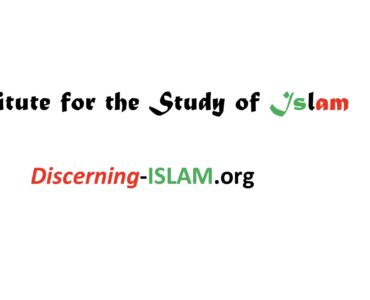
Other Religions
Hinduism in Arab states and Buddhism in the Middle East
There are many Hindus in the Arab states, mainly due to the migration of Indians to the oil-rich states around the Persian Gulf. Hindu temples have been built in Bahrain, United Arab Emirates, Kuwait, Yemen and Oman.
Though Buddhism has had a presence in the Middle East for over 1,000 years, it has recently experienced a revival with an estimated 900,000 people (perhaps more) who profess Buddhism as their religion.
Buddhist adherents make up just over 0.3 percent of the total population of the Middle East. Many of these Buddhists are workers who have migrated from other parts of Asia to the Middle East in the last 20 years, many from countries that have large Buddhist populations, such as China, Vietnam, Thailand, Sri Lanka, Nepal and Bhutan. A small number of engineers, company directors, and managers from Japan, Taiwan, Hong Kong, Singapore, and South Korea have also moved to the Middle East.
Sikhism, the fifth-largest organized religion in the world after Christianity, Islam, Hinduism, and Buddhism, having over 25 million Sikhs worldwide, has a small presence in the Middle East also, mainly in the U.A.E, Oman, Bahrain, Kuwait, and Iran. Most of them are Punjabi-speaking Indian expatriates.
Hinduism In Arab states
There are many Hindus in Arab states, many due to the migration of Indians and Nepalese workers to the oil-rich states around the Persian Gulf.
Hindu temples have been built in Bahrain, the United Arab Emirates, Yemen and Oman.
Millions of Indian diaspora, of different religions, reside and work in the Arab countries. The estimated figures for the Hindu population in 2010, among some Arab countries was as follows, according to Pew Research Center:
United Arab Emirates 490,000
Saudi Arabia 390,000
Kuwait 300,000
Qatar 240,000
Oman 150,000
Yemen 150,000
Bahrain 120,00
Total: 1.84 million
The number of Hindus in other Arab countries, including the countries of the Levant and North Africa, is thought to be negligible, though Libya has an Indo-Nepalese community of about 10,000 individuals (in 2007), many of whom are likely to be Hindu. It is not known . . . but it is doubtful . . . whether any Hindu temples exist in these countries.
Indian settlers came in Oman making settlements for practicing Hinduism. Arab sailors were using the southwest monsoon winds to trade with western Indian ports before the first century AD. An Arab army conquered Sindh in 711 and Arab traders settled in Kerala in the 8th century. In the opposite direction, medieval Gujaratis and other Indians traded extensively with Arab and Somali ports, including Ormuz, Socotra, Mogadishu, Merca, Barawa, Hobyo and Aden. Arab merchants were the dominant carriers of Indian Ocean trade until the Portuguese forcibly supplanted them at the end of the 15th century. Indo-Arabian links were renewed under the British Empire, when many Indians serving in the army or civil service were stationed in Arab lands such as Sudan. The current wave of Indian immigration to the Arab states of the Persian Gulf dates roughly to the 1960s. Hinduism is also one of the fastest growing religions in the Middle East, mainly by immigration from the Indian Subcontinent.
United Arab Emirates
South Asians in the United Arab Emirates (UAE) constitute the largest ethnic group in the country. Over two million Indian migrants (mostly from the southern states Kerala and Tamil Nadu) are estimated to be living in the UAE, who form over 30 percent of the total population of the UAE. A majority of Indians live in the three largest cities of the UAE — Abu Dhabi, Dubai and Sharjah. Of the two million migrants, one million are from Kerala and 450,000 from Tamil Nadu, form the majority in Indian community living in UAE. By 1999, the population of Indian migrants in the UAE, which stood at 170,000 in 1975, was at 750,000. The estimated population of Indians in the UAE as of 2009 is near two million. Indians constitute 42 percent of the total UAE population. A majority of Indians in the UAE (approximately 50 percent – 883,313 in 2011 are from the South Indian state of Kerala, followed by migrants from Tamil Nadu. The majority of Indians are Muslim (50 percent), followed by Christian (25 percent) and Hindu (25 percent).
There are three Hindu temples operating in rented commercial buildings in Dubai, one of which is used by Sikhs as well. Sikhs and Hindus living in Abu Dhabi also practice their religion in private homes.
There are two operating cremation facilities and associated cemeteries for the Hindu community, one in Abu Dhabi and one in Dubai.
Oman
Oman has an immigrant Hindu minority. The number of Hindus declined in the 20th century although it is now stable. Hinduism first came to Muscat in 1507 from Sindh. The original Hindus spoke Kutchi language. By early 19th century there were at least 4,000 Hindus in Oman, all of the intermediate merchant caste. By 1900, there numbers had plummeted to 300. In 1895 the Hindu colony in Muscat came under attack by the Ibadhis. By the time of independence, only a few dozen Hindus remained in Oman. The historical Hindu Quarters of al-Waljat and al-Banyan are no longer occupied by Hindus. Hindu temples once located in Ma’bad al Banyan and Bayt al Pir, no longer exist; the only active Hindu temples today are the Muthi Shwar temple located in Al-Hawshin Muscat, the Shiva temple located in Muttrah, and the Krishna temple located in Darsait. The only Hindu crematorium is located in Sohar, northwest of Muscat. The most prominent immigrant Hindus (Kutchi), are Khimji Ramdas, Dhanji Morarji, Ratansi Purushottam and Purushottam Toprani.
Saudi Arabia
Hindus are not permitted to build temples though many of them worship inside rented apartments/houses in Saudi Arabia. Celebrations of all festivals are also held only indoors. Further permission is asked for outdoor activities for certain area’s. Saudi Arabia discriminates against Hindus (and other non-Muslims) in the legal process. This includes the giving of evidence, prosecution process as well as legal judgement. For example, under the blood money concept in the country, for the calculation of accidental death or injury compensation, the final amount is adjusted after establishing the plaintiff’s religion. According to U.S. State Department, a Sunni Muslim male in Saudi Arabia receives the full award as required by Shari’a, a Jewish or Christian male receives 50 percent of the compensation a Muslim male would receive, and Hindus (and others such as Buddhists, and Sikhs) are only entitled to receive 1/16 the amount a male Sunni Muslim would receive.
Similarly, only the testimony by Sunnis is accepted as reliable, while the testimony of Hindu witnesses (and other non-Muslim religions) are often ignored in courts of law altogether, as stipulated in Shari’a. In general, in Saudi courts, a woman’s testimony is worth only half that of a man’s, and a non-Muslim’s (Hindu) testimony is worth less than that of a Muslim’s.
Qatar
Hindus make up 13.8 percent of Qatar’s population. There are an estimated 300,000 non-resident Hindus in the country.
Buddhism in the Middle East
It is estimated that in the Middle East around 900,000 people, perhaps more, profess Buddhism as their religion. Buddhist adherents make up just over 0.3 percent of the total population of the Middle East. Many of these Buddhists are workers who have migrated from Asia East to the Middle East in the last 20 years, many from countries that have large Buddhist populations, such as China, Vietnam, Thailand, Sri Lanka, and Nepal. A small number of engineers, company directors, and managers from Japan, Taiwan, Hong Kong, Singapore, and South Korea have also moved to the Middle East.
Demographics
Theravada Buddhism is the predominant religion of workers from Thailand and Sri Lanka. Mahayana Buddhism is the predominant religion of workers from East Asia and Vietnam, although Taoism, Confucianism, and Shinto are also represented among these people. In Dubai (the United Arab Emirates) and Qatar, the workers from Sri Lanka were allowed to celebrate Vesak (the most important holiday in Buddhism) in those Islamic countries.
Buddhism in Saudi Arabia
The U.S. State Department’s International Religious Freedom Report 2007 estimates that more than eight million foreigners are living and working in Saudi Arabia, including Muslims and non-Muslims.
In addition to 400,000 Sri Lankans, there are a few thousand Buddhist workers from East Asia, the majority of whom are Chinese, Vietnamese, and Thai. A number of Tibetan-Nepalese immigrants may also be among the foreign population of Saudi Arabia.
Thus approximately 1.5 percent of Saudi Arabia’s population – or around 400,000 people – are Buddhist, likely giving Saudi Arabia the largest Buddhist community in either the Middle East or the Arab World.
Buddhist Population By Country
Buddhist percentages in the Middle East:
| Saudi Arabia | 45.9% | Oman | 3.6% |
| UAE | 24.6% | Bahrain | 0.8% |
| Kuwait | 11.1% | Israel | 0.7% |
| Turkey | 7.9% | Lebanon | 0.4% |
| Qatar | 5% |
Other Religions
513 – 015
https://discernimg-Islam.org
Last Update: 04/2021




